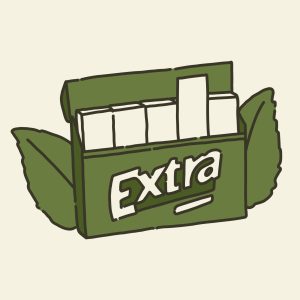Not just pharmacists sell drugs anymore
April 15, 2016
The anxieties that come along with being a student could be listed like the side effects at the end of a drug commercial.
You commonly hear the tired moans of someone going through their college applications or the highly energetic rants against two plus hours of homework. What you don’t hear (at least not very loudly) is how some students tend to cope with these stresses.
There are the usual suspects, marijuana and alcohol, but also some of the lesser known coping methods like pharmaceuticals.
Abusing pills always seemed like an adult problem to me but as it turns out a few of my peers have picked it up as well. However, it’s not like teenagers are lining up at doctors’ offices and mulling over phony problems just to get a prescription.
Being out of my element I talked with Kristine Hummel. She is a social worker at New Trier who works with kids who have been caught in possession/under the influence of any illicit substances. “Kids are telling me that they are getting it from one another” Hummel said.
The drug(s) commonly used fall under Benzodiazepines or “benzos.” These are generally prescribed to patients who suffer from severe anxiety, insomnia, and seizure. They’re also known as muscle relaxers or “happy pills.” Xanax is the most well known of this particular class of psychoactive drugs and goes by the nickname “bars.”
One of the many issues with this sort of self medication is kids aren’t taking a doctor’s prescribed dose of these pills. “What happens is they [aren’t] getting it from a doctor and it is three times the dose of Xanax,” Hummel explains.
Xanax comes with a long list of concerning side effects. Dizziness and drowsiness are the most common of these side effects. Mood changes, memory problems, and suicidal thoughts are amongst the more serious possible side effects listed on the drug’s website.
Another group of commonly abused pharmaceutical drugs are brands like Adderall and Ritalin.
These are used to treat attention deficit hyperactivity disorder, or ADHD. In conversations with students, the most frequent response for why they use them is: “it helps me focus.” It seems that the abuse of these specific drugs aren’t for recreational use, but, instead, as a study aid.
Freshman year, a friend of mine sold his medication to kids during his lunch period in order to buy an Xbox. It made me realize that drug abuse exists in other forms aside from just consumption.
The initial punishment, or first offense, for students “peddling” these pills, is a seven day suspension. It turns into three if students agree to attend a program. If it wasn’t already clear that having loose pills on your person is not acceptable, the administration will determine whether suspension, or the possibility of expulsion, is necessary.
Abuse with analgesics, or painkillers, happens significantly less amongst high school students, while alcohol and marijuana are currently the most prevalent.
Between 2010 and 2013, five Wilmette residents passed away due to drug overdoses, a majority of them in their early twenties. At New Trier, the abuse of opioids, those in the “opium family,” are more common in upperclassmen. The North Shore heroin epidemic has created quite the stir in the media, but bringing direct attention to the increase of drug abuse among high school students, deserves more publicity.
New Trier High School and the neighboring police departments work closely together when any illegal activity happens at school. Instead of the punishments adults receive when dealing with narcotics, students will be given a warning first, then a citation, are taken down to the police station and finally are placed in front of a peer jury.
While this may seem like a tedious process, all of this is to prevent students from getting records before getting off to college. Usually, the official punishment consists of writing a paper or doing community service. This is a luxury that many other students in the Chicago public area lack simply don’t have.











































